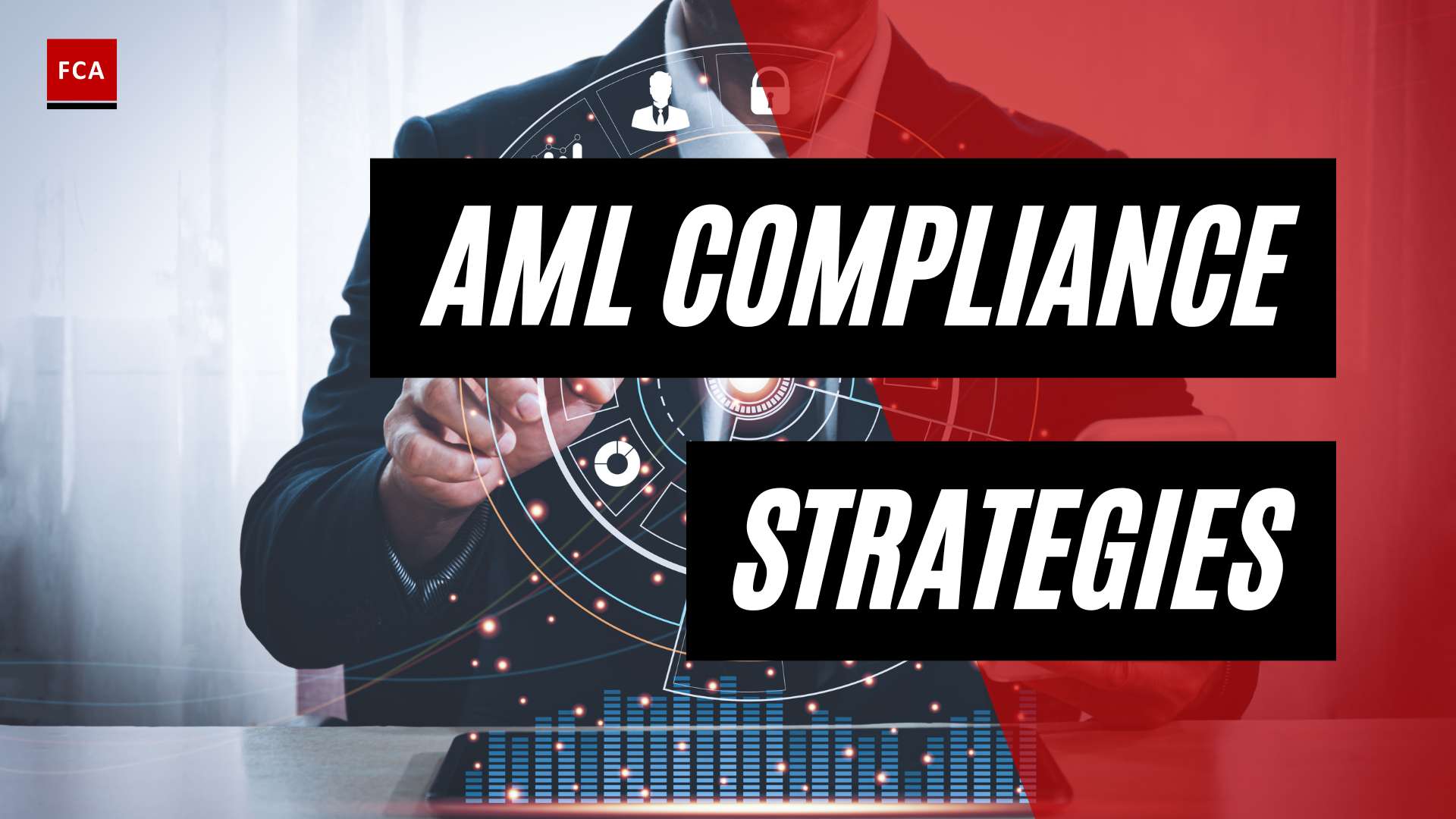Understanding AML Regulations
In today’s global financial landscape, Anti-Money Laundering (AML) regulations play a crucial role in combating illicit financial activities and protecting the integrity of the financial system. AML regulations impose various requirements on businesses, particularly those operating in the financial sector, to prevent money laundering and terrorist financing. This section provides an introduction to AML regulations and emphasizes the importance of AML compliance.
Introduction to AML Regulations
AML regulations refer to a set of laws, rules, and guidelines that aim to prevent and detect money laundering and the financing of terrorism. These regulations are implemented by governments and regulatory bodies to ensure that businesses, especially those in the financial industry, have robust measures in place to identify and mitigate the risks associated with money laundering.
The regulatory landscape for AML has evolved significantly over the years, with various directives and acts introduced to strengthen the fight against money laundering. For example, the Fourth Anti-Money Laundering Directive (4AMLD) in the European Union imposed stringent requirements on financial institutions to conduct customer due diligence, enhance record-keeping, and report suspicious activities (Aware). Subsequently, the Fifth Anti-Money Laundering Directive (5AMLD) and the Sixth Anti-Money Laundering Directive (6AMLD) further expanded the scope and obligations for businesses in preventing money laundering and terrorist financing.
Importance of AML Compliance
AML compliance is of utmost importance for businesses operating in sectors susceptible to money laundering risks, such as banking, financial services, and other designated non-financial businesses. Compliance with AML regulations helps businesses to:
-
Mitigate Risks: AML compliance measures enable businesses to identify and assess the risks associated with money laundering activities. By implementing robust AML practices, businesses can mitigate these risks and prevent the infiltration of illicit funds into their operations.
-
Protect Reputation: Complying with AML regulations helps businesses maintain their reputation and integrity in the market. A robust AML compliance program demonstrates a commitment to ethical business practices and safeguards against potential reputational damage.
-
Meet Legal Obligations: AML regulations have legal implications, and non-compliance can result in severe penalties and legal repercussions. By adhering to AML regulations, businesses can fulfill their legal obligations and minimize the risk of facing fines, sanctions, or even criminal charges.
-
Enhance Customer Trust: AML compliance measures, such as stringent customer due diligence (CDD) processes, help businesses establish and maintain trust with their customers. By ensuring that their operations are free from money laundering activities, businesses can instill confidence in their customers and stakeholders.
To ensure effective AML compliance, businesses need to establish robust compliance programs, leverage appropriate technologies, and stay updated on regulatory changes. By doing so, businesses can safeguard themselves against the risks associated with money laundering and contribute to a secure and transparent financial system.
In the next section, we will explore the impact of AML regulations on businesses, with a particular focus on customer due diligence (CDD) requirements and the different processes involved in Know Your Customer (KYC) practices.
Impact of AML Regulations on Businesses
As AML regulations continue to evolve, businesses are faced with the responsibility of implementing robust compliance measures to prevent money laundering and other financial crimes. One of the key aspects of AML compliance is conducting thorough customer due diligence (CDD). Let’s explore the different requirements and processes involved in customer due diligence, including enhanced due diligence (EDD), simplified due diligence (SDD), and know your customer (KYC) processes.
Customer Due Diligence (CDD) Requirements
Customer due diligence (CDD) is a crucial component of AML compliance, ensuring that businesses in the financial sector have adequate information about their customers, their source of funds, and the purpose of transactions. CDD plays a vital role in detecting and preventing money laundering activities effectively.
The Financial Action Task Force (FATF) recommends that CDD should encompass verifying customer identity, monitoring transactions, assessing risk, and ensuring ongoing monitoring of customer activities to mitigate money laundering risks effectively (Aware). By implementing comprehensive CDD measures, businesses can identify and address potential risks associated with their customers’ activities.
Enhanced Due Diligence (EDD)
Enhanced due diligence (EDD) goes beyond standard CDD requirements and is typically applied to customers who pose a higher risk of money laundering or terrorist financing. EDD involves collecting additional information and conducting more extensive investigations to gain a deeper understanding of the customer’s behavior and the nature of their transactions.
Implementing EDD measures allows businesses to tailor their risk management strategies based on the level of risk associated with specific customers and transactions. By conducting enhanced due diligence, businesses can better mitigate the potential risks associated with high-risk customers or suspicious activities.
Simplified Due Diligence (SDD)
Simplified due diligence (SDD) is applied to customers and transactions that are considered to have a low risk of money laundering or terrorist financing. SDD allows businesses to streamline their CDD procedures, applying reduced measures while still maintaining compliance with AML regulations. This approach is based on the assessment that the risk associated with these customers is low and that the business has a good understanding of their profile and transaction patterns (Youverify Blog).
By implementing SDD, businesses can focus their resources on conducting more comprehensive due diligence for higher-risk customers, while still meeting regulatory requirements for low-risk customers. However, it’s essential to periodically reassess the risk level of customers to ensure that they continue to meet the criteria for simplified due diligence.
Know Your Customer (KYC) Processes
Know Your Customer (KYC) processes are an integral part of customer due diligence. KYC refers to the verification of customer identity before conducting financial transactions. It involves gathering relevant information and documentation to establish the identity of customers and assess the risk of potential illegal intentions behind a transaction (Youverify Blog).
By implementing robust KYC processes, businesses can ensure that they have accurate and up-to-date information about their customers. This helps to prevent activities like money laundering, terrorist financing, and other financial crimes by ensuring that financial institutions are not unwittingly aiding criminals or facilitating illegal activities (Investopedia).
In summary, AML regulations place significant importance on customer due diligence (CDD) requirements. Businesses must establish and maintain appropriate processes for conducting CDD, including enhanced due diligence (EDD) for high-risk customers, simplified due diligence (SDD) for low-risk customers, and thorough know your customer (KYC) processes. By adhering to these requirements, businesses can effectively mitigate the risks associated with money laundering and other financial crimes, protecting their reputation and ensuring compliance with AML regulations.
Key AML Regulations and Directives
Various AML regulations and directives have been implemented to combat money laundering and ensure the integrity of financial systems. Understanding these regulations is crucial for businesses operating in sectors vulnerable to money laundering risks. Let’s explore some key AML regulations and directives, including the Fourth Anti-Money Laundering Directive (4AMLD), the Fifth Anti-Money Laundering Directive (5AMLD), the Sixth Anti-Money Laundering Directive (6AMLD), and AML regulations in the United States.
The Fourth Anti-Money Laundering Directive (4AMLD)
The Fourth Anti-Money Laundering Directive (4AMLD) was implemented by the European Union (EU) in June 2017. Its primary focus was on enhancing customer due diligence (CDD) procedures and the need for beneficial ownership registration. The directive emphasized the importance of identifying and verifying the identity of customers and conducting ongoing monitoring to detect and prevent money laundering and terrorist financing activities. The 4AMLD also aimed to improve cooperation between EU member states in combating money laundering and terrorist financing.
The Fifth Anti-Money Laundering Directive (5AMLD)
The Fifth Anti-Money Laundering Directive (5AMLD), introduced by the EU, expanded the scope and increased the emphasis on enhanced CDD requirements. It emphasized the need for verifying the customer’s identity, beneficial ownership, and sources of funds, especially for high-risk customers. The directive aimed to strengthen the AML framework and enhance transparency in financial transactions to prevent money laundering and terrorist financing activities (Deloitte).
The Sixth Anti-Money Laundering Directive (6AMLD)
The European Union’s Sixth Anti-Money Laundering Directive (6AMLD) came into effect in December 2020. 6AMLD aimed to further strengthen the AML framework and improve cooperation between EU member states in combating money laundering and terrorist financing. It extended the criminal liability for money laundering activities to legal persons (such as organizations) and introduced stricter penalties for AML non-compliance. The directive emphasized the need for more comprehensive risk assessments, enhanced due diligence measures, and cooperation between public and private sectors to combat money laundering (Deloitte).
AML Regulations in the United States
In the United States, anti-money laundering (AML) regulations were initially introduced by the Bank Secrecy Act (BSA) of 1970. The USA PATRIOT Act of 2001 further amended the BSA and strengthened customer due diligence requirements. These regulations require financial institutions to establish robust AML programs, conduct customer due diligence, and report suspicious transactions to regulatory authorities. The regulations aim to prevent money laundering, terrorist financing, and other illicit financial activities. Compliance with AML regulations in the United States is overseen by agencies such as the Financial Crimes Enforcement Network (FinCEN) and the Office of Foreign Assets Control (OFAC) (Investopedia).
Understanding and complying with these key AML regulations and directives is essential for businesses to fulfill their legal obligations and protect themselves from the risks associated with money laundering and terrorist financing. It is crucial for businesses to stay updated on regulatory changes, maintain robust compliance programs, and effectively implement technology solutions to ensure AML compliance.
Consequences of Non-Compliance
Non-compliance with anti-money laundering (AML) regulations and customer due diligence (CDD) requirements can have significant consequences for businesses. It is crucial for organizations to understand and adhere to these regulations to mitigate the associated risks. The consequences of non-compliance include penalties and fines, reputational damage, and legal repercussions.
Penalties and Fines
The penalties for non-compliance with AML regulations and CDD requirements can be severe. Financial institutions and individuals involved in money laundering activities may face substantial fines and penalties. According to the Financial Crime Academy, fines can amount to up to $250,000 or twice the value of the illicit transaction, whichever is greater. In some cases, individuals may also face imprisonment for up to 20 years.
To avoid these penalties, businesses must establish robust AML compliance programs, implement effective CDD processes, and ensure ongoing monitoring of customer transactions.
Reputational Damage
Non-compliance with AML regulations and CDD requirements can lead to significant reputational damage for businesses. Failure to meet these obligations can erode customer trust and confidence in the institution. The negative publicity associated with non-compliance can result in a loss of customers, revenue, and business opportunities.
Maintaining a strong reputation is crucial in the financial sector. Financial institutions must prioritize AML compliance and demonstrate their commitment to preventing money laundering and illicit financial activities. By implementing robust compliance programs, conducting thorough due diligence, and promptly reporting suspicious activities, businesses can protect their reputation and maintain the trust of their customers.
Legal Repercussions
Non-compliance with AML regulations and CDD requirements can also lead to legal repercussions. Regulatory authorities have the power to impose sanctions, revoke licenses, and exclude non-compliant businesses from certain markets or business opportunities. Legal actions may be taken against individuals and organizations involved in money laundering activities.
To mitigate legal risks, businesses should stay informed about regulatory changes, invest in technology for AML compliance, and regularly update their compliance programs to align with evolving regulations. By proactively addressing compliance challenges, organizations can reduce the likelihood of legal repercussions and ensure adherence to AML regulations.
In conclusion, the consequences of non-compliance with AML regulations and customer due diligence can be severe for businesses. Penalties and fines, reputational damage, and legal repercussions are among the potential outcomes of non-compliance. To avoid these consequences, organizations must prioritize AML compliance, establish robust compliance programs, and maintain effective CDD processes. By doing so, businesses can protect themselves from financial losses, reputational harm, and legal liabilities associated with non-compliance with AML regulations and CDD requirements.
Ensuring Effective AML Compliance
To effectively comply with Anti-Money Laundering (AML) regulations, businesses must establish robust compliance programs, leverage technology for AML compliance, and stay updated on regulatory changes.
Robust Compliance Programs
Strong compliance programs are essential for businesses to meet the requirements of AML regulations. Financial institutions, in particular, are mandated to establish and maintain risk-based AML programs tailored to their specific size and risk profiles. These programs should encompass comprehensive customer due diligence (CDD) processes, including Know Your Customer (KYC) procedures, transaction monitoring systems, and risk assessment strategies.
By implementing robust compliance programs, businesses can enhance their ability to detect and prevent money laundering activities. These programs should include procedures for customer identification, ongoing monitoring, and the reporting of suspicious transactions. They should also provide clear guidance to employees on their responsibilities and obligations regarding AML compliance.
Technology for AML Compliance
Technology plays a vital role in enabling businesses to comply with AML regulations and enhance their customer due diligence practices. Transaction monitoring systems and KYC processes are examples of technology-driven solutions that help financial institutions identify and mitigate money laundering risks (Investopedia).
Transaction monitoring systems use sophisticated algorithms to analyze and detect potentially suspicious activities. By monitoring transactions in real-time and applying predefined rules, these systems can flag and escalate transactions that exhibit unusual patterns or characteristics. This enables businesses to investigate and report suspicious activities promptly.
KYC processes, on the other hand, involve the collection and verification of customer information to establish their identity and assess their potential risk. Technology enables businesses to automate and streamline these processes, allowing for efficient customer onboarding, ongoing due diligence, and risk assessment.
Implementing technology-driven solutions not only enhances the effectiveness and efficiency of AML compliance but also helps businesses stay ahead of evolving money laundering techniques.
Staying Updated on Regulatory Changes
AML regulations are continuously evolving to address emerging risks and challenges in financial crime compliance. It is crucial for businesses to stay updated on these regulatory changes to ensure ongoing compliance.
By regularly monitoring regulatory updates from relevant authorities and industry associations, businesses can proactively adapt their compliance programs to meet new requirements. This includes understanding changes in reporting obligations, recordkeeping requirements, risk assessment methodologies, and customer due diligence practices.
Engaging with industry forums, attending conferences, and participating in professional networks can also provide valuable insights into best practices and emerging trends in AML compliance.
By actively staying informed about regulatory changes, businesses can ensure that their compliance programs remain effective and aligned with the latest AML regulations.
To summarize, businesses can ensure effective AML compliance by establishing robust compliance programs, leveraging technology for AML compliance, and staying updated on regulatory changes. By prioritizing these elements, businesses can enhance their ability to detect and prevent money laundering activities while meeting their obligations under AML regulations.








